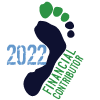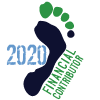I was supposed to be
I was supposed to be interviewed by Matt this week, but our schedules didn't click. Instead, I interviewed with another writer. Since Matt is the senior editor, I wonder if my answers will be edited? Just in case, here's the text (note the repeated emphasis on people that do too much too soon... Matt himself did this a few months ago)

1. Tell me a little bit about your website, Barefoot Running University.
Barefoot Running University started as a medium to document my transition to barefoot running back in 2006. Since there was so little information available online, I wanted it to be used as a resource for others. Eventually I combined it with my ultramarathon site (The Ultramarathon Store) to create the resource it is today.
2. How and when did the idea for The Barefoot Running Book come about?
The Barefoot Running Book started as a series of blog posts and other assorted writings tossed together as a printed resource for my barefoot running workshop attendees in November of 2009. Some of my friends started requesting the packet, so I started refining it. For simplicity, I had some friends help me design it in book form. That became the first edition. It turned out to be much more popular than expected, so I assembled a team of professional book publishers and designers to help create the second edition. I took the basic transition plan from the first edition, expanded on many of my own ideas, and added contributions from many experts in the field... people like barefoot Ted McDonald, Barefoot Rick Roeber, Dr. Dan Lieberman, Dr. Joeseph Froncioni, Al Gauthier and Tina DuBois from The Living Barefoot Show, etc.
3. Speaking of books, there has been one, Christopher McDougall's Born To Run, which has become the bible of the barefoot movement in the last two years. How instrumental, and perhaps more influential, has that book become to barefoot runners?
The book has been extraordinarily influential. The vast majority of new barefoot and minimalist shoe runners were introduced to the ideas in Born to Run. The book is influential because McDougall presents a plausible case against the modern running shoe. Even though it was just one of several themes, the book has become synonymous with barefoot running. unfortunately McDougall did not offer much actual advice for runners interested in transitioning to a more minimal shoe. Many runners, after reading the book, will enthusiastically ditch their traditional running shoes without really understanding the effects it will have on their body. The result is a rash of overuse injuries we affectionately call TMTS (too much too soon).
4. McDougall says in his book that running shoes as we have come to know them are the biggest cause of overuse injuries. Do you tend to agree with that statement?
Yes and no. For some runners, their choice in shoes definitely contributes to injury. This could be the result of the runner not using the correct shoe. Of course, the shoe-fitting process itself is suspect. There have been a few influential studies published in the last two years that would suggest the modern shoe does nothing to reduce injuries (Richards, Magin, and Callister, 2009 and Knapik, et. al. 2010). For me, the real telling research is the recently published research co-authored by Nike researcher Gordon Valiant (Ryan, Valiant, McDonald, and Taunton, 2010). The research concluded that "...this study suggest that our current approach of prescribing in-shoe pronation control systems on the basis of foot type is overly simplistic and potentially injurious." I think this research firmly supports McDougall's assertion and places Nike in an excellent position to abandon the the motion-control running shoe paradigm in favor of a simpler, more minimal shoe.
Having said that, many runners do run injury-free in modern running shoes. While it is tempting to want to frame this as a shod-versus-barefoot debate, that's overly simplistic. Running is a complex movement involving many variables. Runners should experiment with different ideas to find what works best for them. I quote George Sheehan frequently in my book, and I think his "We're an experiment of one" quote perfectly sums up the debate. McDougall succeeded by convincing an entire generation of runners to critically examine the relationship between injuries and shoes. For many of us, moving to a minimal shoe or even barefoot has eliminated many of the injuries we experienced when running in modern running shoes.
5. What do you feel is the most misunderstood or misinterpreted part of the barefoot running movement?
I think the barefoot running movement is sometimes perceived as a group of fanatical zealots bent on convincing the masses to burn their shoes. For those of us that have been at this for awhile, we understand that the majority of the running population has little or no interest in running barefoot. We are interested in teaching people how to run with good form, which will subsequently reduce injuries. Barefoot running is one of the tools that can be used to teach good form.
There are barefoot runners that will be overly excited about barefoot running. In almost every case, these are runners that experienced a long history of injuries and failed treatments. They try barefoot running and their injuries immediately disappear. I encounter this on a regular basis. The runners understandably attribute the "miraculous" cure to running without shoes. Wrapped in enthusiasm, they will then recommend barefoot running to anyone and everyone, even those that have no injury issues. In reality, there may be other contributing factors such as a reduction in training volume, the introduction of rest days, and changes in gait. Part of my goal as an educator is to fully explain why barefoot running reduces injuries.
6. Who can benefit from running barefoot? And who shouldn't run barefoot?
With the exception of runners that suffer from a neurological or circulatory disability, I think barefoot running can benefit every runner. It is an excellent method to learn good running form. It increases proprioception and tactile awareness. It strengthens the bones, tendons, ligaments, and muscles of the feet and legs. All of these benefits can be realized with as little as a few miles of barefoot running each week.
Some runners will choose to run barefoot the majority of the time. I fall into this category. I do it mostly because I love to feel the ground as I run. It introduces an entirely new dimension to running that I find immensely enjoyable. For some runners, it will add a new challenge to a stale routine. It really brings a child-like joy to running.
7. What are some of the most common mistakes made by new barefoot runners?
The most common mistake is doing too much too soon and ignoring the feedback they receive from their body. It is very common for new barefoot runners to run MUCH farther than their body will allow, then ignore obvious symptoms of overuse injuries. Part of this problem has to do with the nature of the common "beginning barefoot" injuries. Modern running shoes, with their raised heel, motion-control, arch support, and excessive cushioning act as casts that prevent our feet from moving. The result is a great deal of atrophy. Your body needs time to physiologically adapt to the "new" stresses of barefoot or minimalist shoe running. Unfortunately many runners begin running barefoot or in minimalist shoes, do too much too soon, suffer an injury, then criticize the practice as causing injury. This is more common when runners try a minimalist shoe such as Vibram's Five Fingers.
I cannot overemphasize these points-
if you begin barefoot or minimalist shoe running, it is critically important to be patient and listen to your body. This is the reason many of us recommend people start running barefoot BEFORE introducing minimalist shoes. The time it takes for your brain to adapt to the new-found tactile sensations from your soles acts as an excellent natural regulator that prevents doing too much too soon. Most of the lessons I've learned come from barefoot running guru Ken Bob Saxton. He famously said (paraphrase) "Your own two feet are the two best running coaches in the world. Learn to listen to them."
8. As a guy who has run in cushioned shoes for the last 13 years, but wants to give barefoot running a try, what's the best way for me to go about it?
First, take off your shoes. Spend time walking around barefoot. This will begin the process of strengthening your anatomy. After a week or two, start experimenting with running.
Find a smooth, hard surface as it provides accurate feedback. Start at a very slow pace and only run a very short distance. For about a third of the runners I encounter, this is all they need. They are able to run a bit, determine what feels right and what doesn't and adjust accordingly. Within a short period of time, they find a gait that works well.
For about another third, some instruction is needed. I give them these tips:
* Relax
* Take small, short steps
* Focus on lifting your feet instead of pushing off to propel yourself forward
For the last third, extensive coaching is necessary. For whatever reason, they have difficulty interpreting the feedback they receive from their body. For these individuals, I recommend attending a clinic, reading a book, or researching some of the barefoot running websites on the 'Net.
Regardless of the person's aptitude, I always remind them to be patient and listen to their body. IF they follow those guidelines, the risk of injury will be eliminated.
9. You race barefoot. What factors need to be considered when speed is involved?
With the exception of two races run in Vibram KSOs and another partially run in huarache sandals, I've been racing barefoot for five years. I've run races ranging from 5K road races to 100 mile ultras. The most important lesson I've learned- know your limitations and the course.
In some situations, I am faster barefoot. In any road race over a 5k, I am faster without shoes. In many trail races, I can run faster and longer barefoot. Shoes tend to interfere with my gait, which increases muscle fatigue. However, the protection of the Vibrams or huaraches over gnarly terrain offsets that limitation. If a race contains terrain that will slow my pace considerably if I am barefoot, I opt for one of my minimalist shoes.
An excellent example is this years' Burning River 100 Mile Endurance Run. My plan was to run the entire race barefoot. At mile 22, I encountered some brutal gravel horse trails. By mile 33, I switched to huarache sandals. That small layer of protection allowed me to run the rest of the race to my full abilities.
Through training, barefoot runners will learn what speed, terrain, and conditions are tolerable. There is a tipping point where running barefoot can become a liability. In that situation, I try to assess the conditions and choose the most minimal shoe for those specific conditions.
10. What are some of the most common injuries suffered by both new and veteran barefoot runners?
New barefoot runners frequently experience injuries. The most common injury is Achilles and/or calf pain. This is caused by the transition from a raised-heel running shoe to a zero-differential minimalist shoe or running barefoot. The raised-heel shoe chronically shortens the Achilles tendon and atrophies the calf muscles. This problem can be avoided by following the "be patient and listen to your body" advice.
New barefoot and minimalist shoe runners also experience what we call "top of the foot pain". This is a dull ache that develops in the metatarsal area of the foot. This is caused by the new stress on a part of the foot that is largely inactive in modern running shoes. The pain can be caused by the tendons, ligaments, muscles, or bones in this area. Again, the patience and body awareness advice will prevent this problem.
Blisters are also common. Most people disregard them as an inevitable by-product of the transition process. I disagree. I believe they provide two critical pieces of information. First, they are an obvious sign you are running too fast or too far for your current ability level. As you learn good form, speed and distance will develop. Second, the location of the blisters can be an important indicator of gait problems. For example, blisters at the front or the lateral side of the sole indicate over striding. Blisters on the tips of the toes indicate pushing off. Blisters on the heel indicate too much of a heel strike.
In my experience, veteran barefoot runners do not have common injuries. I think part of this is the body awareness that develops. If I begin to experience what could develop into an injury, I either rest or cross train. The only time I experience injuries is a race situation where I will largely ignore the early warning signs for the sake of finishing. I will take that risk because I know I will have time to recover after the race.
11. You mentioned form as being very important to undertaking. What considerations need to be made in this regard?
Good form is the essence of barefoot and minimalist shoe running. Modern running shoes allow bad form. Need proof? Watch any local road race. It is not uncommon to see 80% of the runners severely over striding and landing with a very heavy heel strike. I think almost everyone would agree that the human body is not designed to run like that. The less shoe you wear, the less margin of error you have. Essentially running barefoot or in minimalist shoes teaches you to avoid running in a way that causes pain. The resulting gait is what many would consider to be good form. It's no coincidence that all of the methods to learn good form result in a strikingly similar gait. Pose, ChiRunning, Evolution Running, and Good Form Running all teach the same basic style of running. Watch elite runners at any distance. Almost all of them will use the same basic form, which is essentially the same used by barefoot runners. The elements are the same. Runners will be smooth and relaxed, feet touch the ground under the center of gravity, the midfoot part of the foot is often the first part of the foot to touch the ground, cadence is around 180-200 steps per minutes, there will be a slight forward lean, and vertical movement is minimized.
If you watch a small child run, this is exactly what they look like. As soon as we place them in raised-heel supportive shoes, their form changes dramatically. The same thing happens to us as adults. Unfortunately, many adults have to "learn" to run barefoot or in minimalist shoes even though this is how we ran in our youth. We have to unlearn years of poor form reinforced by thick padded running shoes.
I am very excited about the future of the running shoe industry because we seem to be in the midst of a paradigm shift. As consumers, we're beginning to critically examine the correlation between shoes, gait, and injuries. I think we are at the dawn of a bright future where running will become more accessible to members of the population that may have been handicapped by the very shoes that were supposed to help them overcome injuries.

















